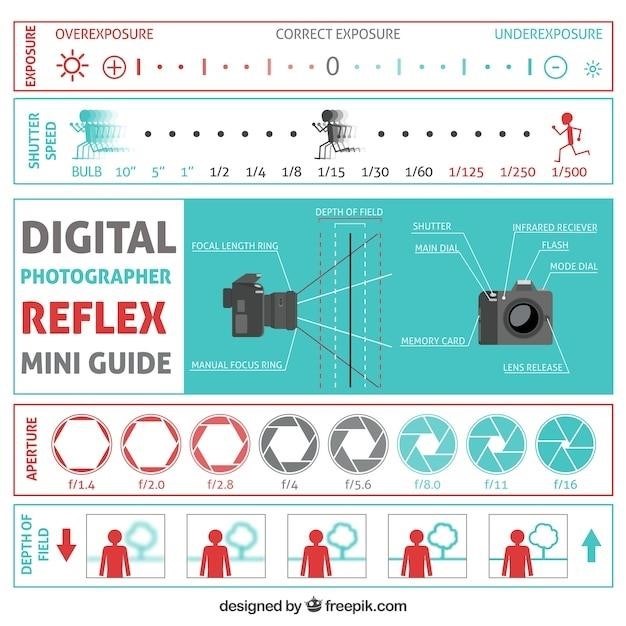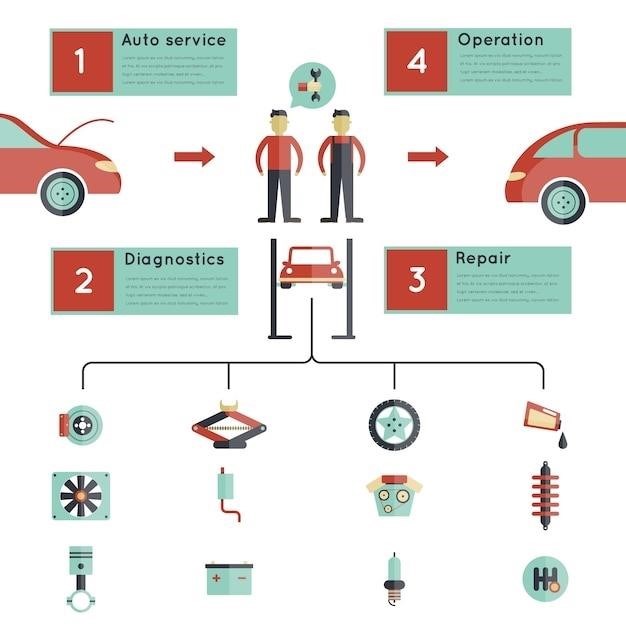Optavia Dining Out Guide⁚ Your Guide to Guilt-Free Indulgence
The Optavia Dining Out Guide is a valuable tool for those following the Optavia program, providing guidance on how to make healthy eating choices while dining out. It includes a list of Optavia-approved restaurants, recommendations for Lean & Green meals, and tips for portion control and social skills. This guide empowers Optavia followers to enjoy their favorite meals while staying committed to their health goals.
Introduction
Navigating the world of dining out while adhering to a specific diet plan can feel like a daunting task. For those committed to the Optavia program, the prospect of enjoying meals with friends and family without compromising their health goals can be particularly challenging. However, the Optavia Dining Out Guide is a game-changer, offering a comprehensive resource designed to empower Optavia followers with the knowledge and tools they need to make informed choices while dining out. This guide is a testament to Optavia’s understanding that maintaining a healthy lifestyle doesn’t have to mean sacrificing social experiences.
The Optavia Dining Out Guide goes beyond simply listing approved restaurants; it provides practical advice and strategies for navigating restaurant menus, understanding meal components, and practicing portion control. The guide emphasizes the importance of staying on track with the Optavia program, ensuring that dining out becomes an enjoyable experience without derailing progress towards weight loss or maintenance goals.
Whether you’re a seasoned Optavia enthusiast or just starting your journey, the Optavia Dining Out Guide is an indispensable companion. It simplifies the process of making healthy choices while dining out, allowing you to confidently embrace social gatherings and special occasions without compromising your commitment to a healthier lifestyle.
Benefits of the Optavia Dining Out Guide
The Optavia Dining Out Guide offers a plethora of benefits that make it an invaluable tool for individuals committed to the Optavia program. It provides a comprehensive roadmap for navigating the complexities of dining out while adhering to the program’s principles. This guide empowers individuals to make informed decisions, ensuring they stay on track with their health goals.
One of the primary benefits of the guide is its ability to simplify the process of finding Optavia-approved restaurants. By providing a list of restaurants that align with the program’s nutritional guidelines, it eliminates the guesswork and potential for dietary missteps. This curated list allows individuals to confidently dine out knowing that their choices are in line with their Optavia plan.
Furthermore, the guide offers invaluable insights into the nutritional profile of menu items, helping individuals identify Lean & Green meals that satisfy both their hunger and their dietary needs. This knowledge empowers individuals to make informed choices that align with their health goals and ensure they receive the necessary nutrients while enjoying a satisfying meal.
The Optavia Dining Out Guide serves as a valuable resource, offering practical tips, strategies, and insights that make navigating the dining out experience while on the Optavia program a breeze. By providing clear guidance and empowering individuals to make informed choices, the guide fosters a sense of confidence and control, promoting a positive and fulfilling dining experience.

How to Use the Optavia Dining Out Guide
Utilizing the Optavia Dining Out Guide is straightforward and empowers you to enjoy dining out while staying true to your Optavia plan. The guide’s user-friendly design makes it easy to navigate, providing readily accessible information to make informed decisions.
Begin by browsing the list of Optavia-approved restaurants. The guide features a wide range of popular dining establishments, from casual eateries to fine dining restaurants, ensuring you have diverse options to choose from. Once you’ve selected a restaurant, use the guide to identify Lean & Green meals that meet the program’s nutritional guidelines. This ensures your meal choice aligns with your Optavia plan, promoting healthy weight management and overall well-being.
The guide offers valuable tips and strategies for navigating the dining out experience. For instance, consider ordering your meal without the sides or opting for a smaller portion size. You can also request for your meal to be prepared without added butter, oil, or sauces. These simple adjustments can significantly reduce calories and fat content, helping you stay on track with your Optavia plan.
Remember to prioritize your health goals and make choices that align with your Optavia plan. The guide provides the necessary information and tools to empower you to enjoy dining out while maintaining a healthy lifestyle. Embrace the guidance provided and enjoy the freedom to dine out with confidence.
Optavia Approved Restaurants
The Optavia Dining Out Guide features a comprehensive list of Optavia-approved restaurants, providing a diverse range of options for those following the Optavia program. The guide meticulously evaluates the menus of popular dining establishments, identifying items that align with the program’s nutritional guidelines. This ensures that Optavia followers can enjoy dining out while staying true to their health goals.
Whether you crave a casual meal at a fast-food chain or a more formal dining experience, the guide includes a variety of restaurants to suit different preferences. You can explore options like Panera Bread, Chipotle Mexican Grill, and Subway, known for their customizable menu items. For a more upscale dining experience, the guide also features restaurants like The Cheesecake Factory, Olive Garden, and Red Lobster.
Each restaurant listing in the guide provides specific recommendations for Lean & Green meal components. This includes suggestions for protein sources, non-starchy vegetables, and healthy fats. Optavia’s Registered Dietitian Nutritionists carefully selected these menu items to ensure they meet the program’s nutritional requirements. By following the guide’s recommendations, you can confidently choose meals that promote healthy weight management and overall well-being.
The Optavia Dining Out Guide serves as a valuable resource for those seeking to enjoy dining out while staying committed to their Optavia plan. The guide’s comprehensive list of approved restaurants, along with its specific recommendations, empowers you to make informed decisions that align with your health goals.
Lean & Green Meal Components
The Optavia Dining Out Guide emphasizes the importance of Lean & Green meals, a core concept in the Optavia program. These meals are carefully crafted to provide a balanced and nutritious approach to weight management. The guide outlines the key components of a Lean & Green meal, ensuring Optavia followers can make informed choices when dining out.
A Lean & Green meal typically features a lean protein source, such as grilled chicken, fish, or tofu. These proteins are low in fat and calories, providing essential nutrients without contributing to excessive calorie intake. Non-starchy vegetables, such as broccoli, spinach, or Brussels sprouts, are another essential component. These vegetables are rich in fiber and nutrients, promoting satiety and providing essential vitamins and minerals.
The guide also highlights the role of healthy fats in a Lean & Green meal. While fats are essential for overall health, choosing the right type is crucial. Optavia recommends incorporating healthy fats like avocado, olive oil, or nuts in moderation. These fats provide essential fatty acids and contribute to a feeling of fullness, helping to prevent overeating.
The Optavia Dining Out Guide’s emphasis on Lean & Green meal components empowers you to make healthy choices when dining out, ensuring your meals align with the program’s principles. By understanding the key components of these meals, you can confidently select menu items that support your weight management journey.
Tips for Dining Out on Optavia
Dining out on the Optavia plan requires careful planning and strategic choices. The Optavia Dining Out Guide provides valuable tips to help you navigate restaurant meals while staying true to your program. One key recommendation is to prepare beforehand. Before heading out, review the restaurant’s menu online, identifying potential Lean & Green options. This pre-planning helps avoid impulsive decisions and allows you to select dishes that align with your program’s goals.
When you arrive at the restaurant, don’t hesitate to communicate your dietary needs to the server. Inform them about your adherence to the Optavia plan and ask for guidance on menu items that fit your Lean & Green requirements. Don’t be afraid to request modifications, such as substituting grilled protein for fried options or asking for vegetables instead of starchy sides.
Portion control is another essential aspect of dining out on Optavia. The guide encourages you to practice mindful eating, paying attention to your body’s hunger cues. Start by ordering a smaller portion or sharing a meal with a friend. If you find yourself still hungry, order an additional serving of vegetables or a small portion of lean protein.
Remember that social situations can sometimes make it challenging to stick to your plan. The Optavia Dining Out Guide suggests finding a supportive dining companion who understands your goals. If you’re dining with friends or family who aren’t on the Optavia program, be upfront about your dietary needs and politely decline any dishes that don’t align with your plan.
By following these tips, you can enjoy dining out while remaining committed to your Optavia journey, making healthy choices that support your weight management goals.
Portion Control Strategies
Portion control is a crucial element of the Optavia program, and it’s equally important when dining out. The Optavia Dining Out Guide provides strategies to help you practice portion control effectively while enjoying restaurant meals. One key tactic is to choose smaller portions or share a meal with a dining companion. This approach allows you to savor the flavors without overindulging. Another effective strategy is to order a side salad instead of a larger meal. Salads are typically lighter and provide a satisfying volume of vegetables without exceeding your caloric intake.
When ordering a meal, consider requesting a “to-go” box before your food arrives. This allows you to pack half of your meal for later consumption, ensuring you don’t overeat and preventing potential food waste. The guide also encourages mindful eating, paying attention to your body’s hunger cues. Start by taking small bites and savoring each mouthful. This deliberate pace helps you become more aware of your satiety levels and prevents you from overeating.
If you find yourself still hungry after finishing your meal, order an additional serving of vegetables or a small portion of lean protein. This allows you to add more volume without significantly increasing your calorie intake. Remember, it’s essential to listen to your body and stop eating when you feel comfortably full.
The Optavia Dining Out Guide emphasizes that portion control is not about deprivation but about making conscious choices that support your health and weight management goals. By practicing these strategies, you can enjoy dining out while remaining mindful of your portions and staying true to the Optavia program.
Social Skills for Dining Out
The Optavia Dining Out Guide recognizes that social situations often play a significant role in our dining experiences. It emphasizes the importance of navigating social dynamics while staying committed to your health goals. The guide suggests being open and honest with your dining companions about your dietary choices. Explaining your adherence to the Optavia program can help them understand your decisions and provide support.
It’s also crucial to be mindful of your own social cues. While you’re enjoying your meal, avoid pressuring others to eat less or make similar choices. Instead, focus on enjoying the company and conversation while maintaining your own healthy habits. The guide encourages finding ways to engage in social activities that don’t revolve solely around food.
Opting for activities like attending sporting events, going to the movies, or engaging in a game night can provide enjoyable social experiences without the temptation of unhealthy food choices. Remember, social interactions should be a source of joy and connection, not a source of stress or pressure.
The Optavia Dining Out Guide encourages building a support system of friends and family who understand your commitment to health and wellness. Surrounding yourself with people who respect your choices and provide encouragement can make navigating social dining situations much easier.

Optavia Dining Out Guide Resources
The Optavia Dining Out Guide offers a wealth of resources to help you navigate dining out while staying on track with your weight management goals. One of the most valuable resources is the Optavia App, which provides access to a comprehensive database of restaurant menus, allowing you to search for Lean & Green meal options. The app also offers a feature that allows you to track your food intake and ensure you stay within your daily calorie and macronutrient targets.
In addition to the app, Optavia provides a variety of online resources. Their website features a dedicated section for dining out, offering tips and strategies for making healthy choices. You can also find a list of Optavia-approved restaurants, along with recommendations for Lean & Green meals at each establishment. The website also includes a section with frequently asked questions about dining out on the Optavia program.
Optavia also offers a community forum where you can connect with other Optavia followers and share tips, experiences, and support. This forum provides a platform for exchanging information and finding encouragement from others who understand the challenges of navigating social dining situations. These resources empower you to make informed decisions and stay motivated on your weight management journey, even when dining out.
Optavia Dining Out Guide FAQs
The Optavia Dining Out Guide addresses a range of common questions about dining out while following the Optavia program. One frequently asked question is, “Can I still eat out on the Optavia plan?” The answer is a resounding yes. The Optavia Dining Out Guide provides guidance on making healthy choices at restaurants, ensuring you stay on track with your weight management goals. Another common question is, “How do I find Optavia-approved restaurants?” The guide provides a list of popular restaurants that offer Lean & Green meal options, making it easier to locate suitable dining destinations.
Many people also ask, “What are Lean & Green meals?” Lean & Green meals consist of a lean protein source, such as grilled chicken or fish, paired with a non-starchy vegetable, such as broccoli or spinach. The guide provides specific recommendations for Lean & Green meals at various restaurants, helping you make informed choices. The guide also addresses questions about portion control, explaining how to make healthy choices when dining out with friends and family.
Finally, many people wonder, “How can I navigate social situations when dining out on Optavia?” The guide offers tips for staying true to your plan while enjoying social outings. It emphasizes the importance of communicating your dietary needs to your dining companions and suggests strategies for making healthy choices even when surrounded by tempting food options.
The Optavia Dining Out Guide is an indispensable resource for anyone following the Optavia program who enjoys dining out. It provides valuable information on how to make healthy eating decisions while dining out, helping you stay on track with your weight management goals without sacrificing your enjoyment of delicious meals. The guide offers a comprehensive approach, covering everything from finding Optavia-approved restaurants and understanding Lean & Green meal components to mastering portion control and navigating social situations.
By following the guidelines outlined in the guide, you can confidently enjoy meals out with friends and family without feeling restricted or deprived. Whether you’re at a sit-down restaurant, grabbing takeout, or attending a special occasion, the Optavia Dining Out Guide empowers you to make informed choices that support your health and wellness journey. Remember, healthy eating doesn’t have to mean sacrificing your social life. With the help of the Optavia Dining Out Guide, you can enjoy dining out while staying true to your Optavia plan.









